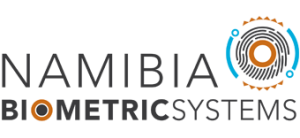Information Fusion For Multimodal Biometrics
Multimodal biometric systems overcome limitations such as:
Noise in captured data – A voice sample can be altered by cold while a fingerprint image can be altered by a scar. Noise data can also be a result of defective or improper maintenance of the sensors. When the captured biometric data from a single trait is corrupted with noise, the availability of other (less noisy) biometric characteristics may aid in the reliable determination of identity.
Intra-class variation – This is typically due to an individual who incorrectly interacting with the sensor or due to changes in the biometric characteristics of a person over a period of time. Therefore, results in a variation of the biometric characteristic for the same individual. Intra-class variation can be handled by storing multiple templates for every user.
Inter-class similarities – This refers to the overlap of discriminating features corresponding to multiple individuals. Increasing the number of individuals enrolled in a biometric system, is likely to increase the inter-class similarities and false match rate of an identification system. Multimodal biometric increases the number of discriminatory features for every individual.
Non-universality – The biometric system may not be able to capture meaningful biometric data from a subset of users. A fingerprint system may extract incorrect minutia features from the fingerprint of certain individuals due to poor quality of the ridges. Multimodal can substantially improve the accuracy of a biometric system depending upon the information being combined and the fusion methodology.
Spoof attacks – This involves the deliberate manipulation of one’s biometric characteristic in order to avoid recognition or the creation of a fake biometric characteristic in order to take on the identity of another person. It becomes increasingly difficult for an impostor to spoof multiple biometric characteristics of a legitimately enrolled individual.
The inherent limitations of a single biometric system are alleviated by fusing the information presented by multiple sources. Fusion of biometric information results in increasing the number of discriminating features used to represent individuals. The magnitude of discriminatory information available in a biometric characteristic is restricted. Therefore, it increases the number of individuals who can be enrolled in the biometric system.
Humans recognize each other using multiple behavioural and physical biometric characteristics. Therefore, the recognition process may be viewed as the reconciliation of evidence from multiple modalities. Although humans can sometimes use a single modality to identify each other, it is not always used to reliable perform recognition.
Information fusion has also been used in a diversity of scientific fields such as weather forecasting. Weather forecasting system relies on evidence provided by diverse sources of information such as geostationary meteorological satellites, weather balloons/planes, ground stations, etc.
In this article we consider multi-sensor fusion strategy. Multi-sensor system uses a single biometric characteristic captured by multiple sensors in order to extract diverse information. For example, a system may capture the two dimensional texture content of a person’s face using a 2D camera and a three dimensional surface shape of the face using a 3D camera. The use of multiple sensors, in some instances, can result in the acquisition of complementary information that can enhance the recognition ability of the system. The performance of a 2D face matching system can be improved by utilizing the shape information presented by 3D range images.
Our researchers within Biometric Research Laboratory, BRL, at Namibia Biometric Systems will continue to examine the levels of fusion that are possible in a multimodal biometric system in the next article.
More information on the implementation of biometrics based solutions can be requested from info@namibiabiometricsystems.com.
